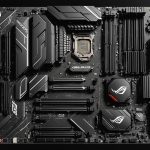Understanding Prometheus and Its Role in Monitoring Microservices
Navigating the microservices architecture landscape can be complex, but Prometheus offers a robust solution for monitoring and observability. At its core, Prometheus is a versatile monitoring system designed to capture and store time-series data. This makes it inherently suitable for microservices where agility and scalability are paramount.
Overview of Prometheus Architecture
Prometheus operates by scraping metrics from configured endpoints at specified intervals. These metrics are stored locally in its time-series database. The architecture also includes a powerful component known as PromQL, a built-in query language that enables sophisticated, multi-dimensional data retrieval. This is crucial for gaining granular insights into system performance.
Topic to read : How Can the Internet Shape the Future of Green Technology?
Importance of Monitoring in Microservices Environments
In a microservices environment, services are typically distributed and decoupled, making monitoring essential. Without effective monitoring like that provided by Prometheus, identifying performance bottlenecks and ensuring service reliability can prove challenging. This proactive approach to observability helps mitigate issues before they escalate, maintaining system health and user satisfaction.
Comparison with Other Monitoring Tools
While other tools like Nagios or Zabbix offer robust monitoring capabilities, Prometheus excels in its focus on metrics and real-time data. Its decentralized approach, combined with native support for microservices architectures, offers unique adaptability, making it a preferred choice in dynamic, containerized environments.
Have you seen this : What role does cybersecurity education play in UK schools?
Implementing Prometheus in Microservices Architectures
Integrating Prometheus into a microservices architecture requires careful planning and execution to ensure robust monitoring. To begin the implementation, first, define the microservices you aim to monitor and identify their metric endpoints. Prometheus relies on these endpoints to scrape metrics, offering a detailed view of individual service performance.
Prometheus supports service discovery, automatically navigating dynamic environments. This feature is crucial in containerized setups where instances may frequently change. Take advantage of this by ensuring the correct configuration of service discovery for each target microservice.
A key consideration in microservices integration is using Prometheus with platforms like Kubernetes. Kubernetes’ orchestration capabilities and in-built support streamline Prometheus deployment. Deploy Prometheus as a Kubernetes pod, allowing it to automatically discover containerized services.
Best practices include the regular review of scraping targets and optimizing the scrape interval for each service. The frequency of this monitoring impacts the freshness and accuracy of the data.
For a successful deployment, consider using Helm charts to simplify the setup process within Kubernetes. This will enable a quick start and easy maintenance of your monitoring stack, ensuring comprehensive oversight of your microservice applications.
Implementing Prometheus in Microservices Architectures
When implementing Prometheus within a microservices architecture, a structured approach is key to ensuring effective monitoring. Begin by identifying the microservices to be monitored and defining their metric endpoints, as these serve as the foundation for Prometheus to capture data accurately.
Prometheus offers valuable service discovery features, enabling seamless navigation through dynamic environments where service instances change frequently. Take advantage of this by carefully configuring service discovery protocols for each service to maintain up-to-date monitoring.
Incorporating Prometheus with container orchestration platforms like Kubernetes can significantly streamline the deployment process. Kubernetes’ orchestration capabilities naturally align with Prometheus, allowing for the efficient automatic discovery of containerized services. Deploying Prometheus as a Kubernetes pod enhances the ease of maintaining comprehensive oversight over all services.
Best practices suggest frequent reviews of scraping targets and optimizing scrape intervals for each service to ensure accurate data reflection. Variably adjusting these intervals can impact the data’s freshness and reliability.
Using Helm charts during deployment simplifies the setup and maintenance of Prometheus within Kubernetes. These charts provide a quick start to deploying Prometheus, cultivating an efficient and responsive monitoring framework across all integrated microservices.
Effective Alerting Strategies with Prometheus
In the realm of monitoring, crafting precise alert rules and thresholds can elevate your microservices’ response to issues. Prometheus facilitates this by enabling the configuration of alerts that align closely with specific system metrics and performance indicators. This approach ensures that only genuinely critical situations trigger alerts, minimizing unnecessary noise.
The integration with Alertmanager is pivotal, serving as the central hub for processing alerts. Alertmanager handles the de-duplication, grouping, and routing of alerts to the right notification channels, tailoring responses to the urgency and severity of incidents. This ensures that alerts are actionable and directed to the most appropriate teams or individuals.
When considering notification systems, it is essential to strategize around diverse notification channels. These can include emails, Slack, SMS, or other messaging apps suitable for your operational workflow. Escalation policies play a vital role here—establishing clear steps for notifications based on alert severity guarantees timely responses and resolution of issues.
In essence, the effectiveness of an alerting strategy lies in its ability to prioritize and convey information accurately, ensuring minimal disruption and maximum uptime. This systematic approach to alerts and notifications can significantly enhance the agility and reliability of a microservices environment.
Advanced Monitoring Techniques and Best Practices
Exploring Prometheus further, it offers advanced techniques and best practices that enhance the observability of microservices. A cornerstone of this is the use of recording rules. These enable the pre-computation of queries, streamlining performance monitoring and metrics analysis. By reducing computational overhead, they allow for faster retrieval times, which is vital for rapid response scenarios.
In addition to recording rules, crafting insightful alerts enhances observability. These alerts offer a proactive approach to detect anomalies by analysing trends over time, rather than just absolute values. This helps in targeting potential issues before they escalate.
Effective monitoring also involves correlating metrics with application performance to identify root causes of issues swiftly. By recognising patterns and correlations, teams can isolate variables impacting performance, leading to more targeted troubleshooting.
Investing in a continuous feedback loop is another best practice. It ensures iterative improvement of your monitoring processes, encouraging adaptability to evolving systems. This approach involves regular reviews of metrics and alert configurations, ensuring they remain relevant and effective.
These techniques establish a robust monitoring framework, enhancing reliability and performance in complex microservices architectures. Prometheus, through these methodologies, positions itself as a sophisticated tool for modern-day monitoring challenges.
Practical Examples of Monitoring Microservices with Prometheus
To truly leverage Prometheus, it’s essential to explore real-world scenarios that highlight its effective use within microservices. Below are some practical use cases offering insight.
Case Study: E-commerce Platform Monitoring
In an e-commerce setup, Prometheus monitors transaction processing metrics, such as average response times and request rates. By capturing and analysing these metrics, businesses can pinpoint performance bottlenecks, ensuring seamless user experiences.
Common Metrics for Microservices
Typical metrics monitored include CPU utilisation, memory consumption, and error rates. These metrics are vital as they provide a comprehensive view of service health and performance, guiding both proactive and reactive responses to potential issues.
Troubleshooting with Prometheus
Prometheus aids troubleshooting by offering detailed historical data analysis. For instance, if a service experiences downtime, engineers can query past metrics to identify trends or anomalies that might have predicted the failure, facilitating quicker resolutions in the future.
Prometheus, through these examples, demonstrates its pivotal role in maintaining robust, responsive microservices environments. Implementing these strategies ensures preventive maintenance, ultimately leading to enhanced system performance and reliability.
Future Trends in Monitoring Microservices with Prometheus
As microservices architectures evolve, so do the techniques for monitoring them. One emerging trend is the enhanced observability tools powered by machine learning and AI. These technologies enable automatic pattern detection and anomaly predictions, elevating Prometheus’ capabilities by minimizing manual intervention in data analysis.
The Prometheus ecosystem is poised for further integration with AI-driven solutions, transforming how data is processed and interpreted. This evolution allows operators to foresee potential issues more accurately and implement preemptive measures for improved system resilience.
Another significant trend is the development of Prometheus plugins for broader compatibility across various platforms and service meshes. These enhancements aim to address complex monitoring needs, ensuring seamless integration and consistent data flow within heterogeneous environments.
Future adaptations of Prometheus are likely to emphasize greater flexibility and user-friendliness, highlighting simplified operational workflows. This aligns with the growing demand for intuitive interfaces, enabling teams to harness Prometheus’s full potential without extensive configuration hurdles.
Additionally, there will be a focus on scalability improvements, accommodating even larger and more dynamic systems. By anticipating these trends, microservices environments can harness the full breadth of Prometheus applications, ensuring robust, future-ready monitoring solutions.
Key Features of Prometheus for Effective Monitoring
Prometheus offers distinct features that make it indispensable for metrics collection in dynamic environments. Its architecture is tailored to gather metrics efficiently, employing a pull-based model by scraping endpoints. This allows the systemic collection of real-time data crucial for identifying performance trends and anomalies.
Central to Prometheus is its time-series database, storing vast amounts of collected data with timestamp information. The database’s design ensures the efficient handling of high cardinality and dimensionality, offering users a granular view of their systems’ performance.
Another standout feature is PromQL, Prometheus’s built-in query language. It supports complex querying, enabling users to filter and aggregate data for insightful analysis. The language’s capability to formulate multi-dimensional data queries is crucial for comprehensive data examination, empowering operators to gain significant insights swiftly.
Prometheus also excels in multi-dimensional data storage, allowing it to handle varied label combinations for each metric stored. This flexibility is vital in complex environments where different metrics must be correlated to provide a cohesive performance overview. Together, these features establish Prometheus as a powerful tool for organizations seeking robust, proactive monitoring solutions.







